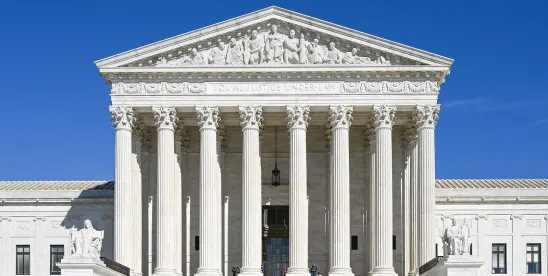In 1984, the U.S. Supreme Court decided in Chevron U.S.A. v. Natural Resources Defense Council, Inc. (467 U.S. 837) that Federal departments and agencies can interpret federal law when the statute is unclear. Over the years, there has been a growing sentiment that this decision gave the executive branch too much power. Ultimately, this has led to cases challenging this “Chevron Doctrine”.
On January 17th, the U.S. Supreme Court heard oral arguments on Loper Bright Enterprises et al. v. Raimondo et al and Relentless, Inc. v. Department of Commerce. Plaintiffs raised three constitutional claims: (1) Chevron violates Article III by shifting interpretive authority of federal law from the courts to the executive branch; (2) violates Article I when it functions to permit departments and agencies to formulate policy because Article I vests Congress with all lawmaking power; and, (3) violates due process by tipping the scales in favor of the Federal government in litigation with private citizens.
During the oral arguments, it seemed clear there is a majority of the Court ready to overturn Chevron. This raises concern that, if the Court makes that decision, will the decision affect previous regulatory challenges, or only regulatory challenges going forward?
Another concern is what happens when the Court reverses a previous decision or simply invalidates current statutes. Prior to 1983, Congress enacted several laws authorizing the legislative veto over department or agency actions. This veto could be exercised by a Congressional subcommittee, full committee, one House, or both Houses. In 1983, in Chada v. INS (462 U.S. 919), the Court ruled the legislative veto was unconstitutional. This decision invalidated the legislative veto in over 200 laws.
What if the Court overturns Chevron?
If the Court were to overturn Chevron, there is an expectation that the Federal judicial branch will be overrun with lawsuits against all manner of proposed and final regulations across the Federal government.
Just look at the annual Medicare payment rules. For example, the Department of Health and Human Services, through the Centers for Medicare and Medicaid Services, issues annual Medicare payment rules for physician, hospital inpatient and outpatient, home health, End Stage Renal Disease, etc. Often providers and their representatives express opposition or concern that the rules do not provide sufficient compensation. Imagine some or all of these rules challenged.
There is another option. Departments and agencies could turn to more negotiated rulemaking.
Under this process departments and agencies may formulate proposed rules through a process of formal negotiations among interested parties. Negotiated rulemaking is a process in which representatives of Federal agencies and affected parties work together in a committee to reach a consensus on what can ultimately become a proposed rule. Although negotiated rulemaking is not appropriate for all regulations, advocates have felt the approach can speed rule development, reduce litigation, and generate more creative and effective regulatory solutions. Congress has sometimes mandated negotiated rulemaking and established specific procedures and time frames to follow.
The Negotiated Rulemaking Act of 1990 authorized an agency to establish a negotiated rulemaking committee to develop and negotiate a proposed agency rule whenever the head of the agency determines that the use of the negotiated rulemaking procedure is in the public interest. Agencies are permitted to use individuals to determine whether negotiated rulemaking is appropriate and to select participants, and to use facilitators to chair negotiated rulemaking committee meetings.
The Negotiated Rulemaking Act of 1996 required the President to designate an agency or designate or establish an interagency committee to facilitate and encourage agency use of negotiated rulemaking. An agency that is considering, planning, or conducting a negotiated rulemaking may consult with such agency or committee for information and assistance.
Decision Timetable
These two cases attracted a great deal of attention. As such, the Court will likely release its decision in June, prior to its summer recess. Historically, advocates have lobbied Congress for legislation, with little attention to the subsequent rulemaking process. If the Court does overturn the Chevron Doctrine, stakeholders will have to advocate to convince Congress to draft more detailed legislation. Then, they must step up participation in the regulatory rulemaking process. This means communicating with agencies prior to drafting proposed rules, as well as commenting once the proposed rules are published in the Federal Register. Now we await the Court.




 />i
/>i
